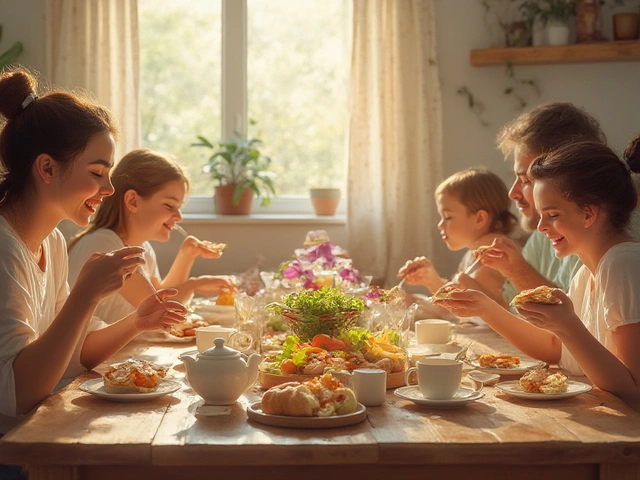Creative arts therapies unfold a world where colors, lines, forms, sounds, and movements translate not just personal expressions but offer relief and reconstruction of emotional landscapes. This exploration is not merely about hobby or leisure; it delves into how these expressive forms act as potent tools for healing and personal growth. At its core, this therapeutic approach harnesses creativity to facilitate communication, foster emotional resilience, and promote recovery.
The journey into creative arts therapies begins with understanding the varied forms this treatment can take. Whether through strokes of a paintbrush, the harmonics of music, or the expressive gestures of dance, each modality taps into different sensory experiences to foster healing. The underlying principle in each form is fluid communication—a pathway to express that which words sometimes cannot.
- Introduction to Creative Arts Therapies
- Types of Creative Arts Therapies
- Benefits of Creative Arts Therapies
- Real-Life Success Stories
- How to Incorporate Arts Therapies
Introduction to Creative Arts Therapies
The realm of creative arts therapies extends beyond traditional health treatments, embracing artistic expression as a catalyst for mental and emotional healing. These therapies are grounded in the principle that the creative process involved in artistic self-expression helps people to resolve conflicts and problems, develop interpersonal skills, manage behavior, reduce stress, increase self-esteem and self-awareness, and achieve insight. Artistic expression might come in the forms of painting, sculpting, music, drama, dance, writing, and more. Each modality offers a unique avenue for expressing emotions and facing one's inner conflicts without the necessity for words.
Understandably, the history of using art as a therapeutic intervention is as old as art itself. Ancient civilizations used artistic processes in their ritualistic healing practices. These historical roots deeply influence modern methods, suggesting a timeless connection between art and healing. Today, psychologists and therapists often incorporate these creative practices into treatments to tap into emotions that might be too difficult to access through conventional talk therapy alone. This shift towards creative methodologies marks a significant evolution in the approach to mental healthcare.
Engagement in creative arts therapies does not require any artistic skills or previous experience. The primary focus is not on the end product but on the process of creation. Participants are encouraged to immerse themselves in the act of creation—pouring their thoughts and feelings into their artful endeavors. This process serves as a mirror reflecting their emotional state and can significantly help in the identification and articulation of underlying issues. Moreover, this engagement fosters a nurturing environment that cultivates not only individual healing but also communal support through shared experiences in group settings.
Creative arts therapies have found their application in various settings, including hospitals, schools, rehabilitation centers, and private practices. Their adaptability across different fields showcases their versatility and effectiveness in addressing a range of psychological and emotional issues. From children struggling with developmental delays to adults coping with depression, these therapies offer a valuable tool for mental health professionals striving to provide holistic care. They create a space where the individuals can explore their feelings in a safe, constructive atmosphere, unlocking new pathways to wellness that traditional methods might not reach.
"Creative arts therapies allow for the exploration of the deepest corners of the mind, giving voice to emotions previously unarticulated, and facilitating a powerful form of healing," noted Dr. Sarah Jensen, a leading psychologist specializing in art therapy.
Types of Creative Arts Therapies
Delving into the world of creative arts therapies reveals a vibrant spectrum of modalities, each with unique mechanisms for aiding individuals in their mental health journeys. One of the most widely recognized forms is Art Therapy. It involves the use of materials like paint, clay, and charcoal, allowing individuals to explore and express feelings that might be too difficult to articulate with words. Here, creation is not about artistic skill but about finding a visual language for personal emotions and thoughts.
Music Therapy, another pivotal branch, employs music to address physical, emotional, cognitive, and social needs. Through activities such as listening, playing, or composing music, people find an avenue for expression and communication which can be particularly uplifting for those dealing with depression or anxiety. Music can stimulate the brain in complex ways, perhaps explaining why its impact can be so profound.
Dance/Movement Therapy uses movement to help individuals achieve emotional, cognitive, and physical integration. Sessions might involve spontaneous movement, structured dance, or simple exercises, based on the premise that body and mind are interconnected. This form of therapy can be especially beneficial for those who find it easier to express themselves through their body rather than words.
Similarly, Drama Therapy utilizes the theatrical process to help participants reflect on their lives, make meaning of past events, and explore new ways of being. Whether improvising, performing scripted plays, or engaging in storytelling, the act of drama can build confidence, improve interpersonal skills, and facilitate cathartic experiences.
Finally, Writing Therapy taps into the power of words and narrative to help individuals process and capture their experiences in a structured form. Whether keeping a journal or composing poetry, writing offers a personal space for reflection and can be a powerful tool in managing personal challenges like grief or trauma.
Benefits of Creative Arts Therapies
The transformative effects of creative arts therapies on mental health are both profound and well-documented. Engaging in processes such as painting, drawing, playing music, or dancing does not just fill time; these activities strengthen the mind, often leading to decreased feelings of depression and anxiety. Studies highlight that when individuals express themselves through creative mediums, it creates a channel for emotional release, significantly reducing stress. This mode of therapy is particularly beneficial because it provides a voice to feelings that might be too difficult to express verbally.
One of the core strengths of creative arts therapies lies in its ability to enhance self-esteem and confidence. Survey participants in numerous studies frequently report feeling more empowered during and after sessions. This empowerment helps cultivate a healthier self-image, which is critical in the recovery from various psychosocial issues. Engaging in creative practices promotes independence and encourages individuals to take ownership of their therapeutic journey, fostering resilience and self-reliance.
Moreover, the social aspect of participating in creative arts therapies should not be underestimated. These sessions often occur in group settings, which helps individuals feel less isolated in their experiences. Sharing a creative space with others struggling with similar issues can significantly reinforce the therapeutic process, providing a support network that extends beyond traditional therapy sessions.
In addition to emotional and psychological benefits, creative arts therapies can also offer physical advantages. For instance, dance therapy has been shown to improve mobility and physical coordination in individuals with physical disabilities or the elderly. A study in the Journal of Physical Therapy Science reported improved balance and gait in seniors who participated in structured dance programs—highlighting the dual benefits of creative therapies on both mind and body.
The benefits of indulging in creative arts therapies extend beyond the limitations of conventional treatment. It offers a holistic approach, encapsulating the healing of mind, body, and spirit. Whether it is through painting, sculpting, music, or dance, each activity is designed to contribute uniquely to an individual's therapy journey, making it a versatile and vital part of modern therapeutic practices.
Real-Life Success Stories
One of the most vivid illustrations of the benefits of creative arts therapies can be seen through the stories of individuals whose lives have been transformed by this innovative approach. Take, for example, Sarah, a young woman diagnosed with major depressive disorder. Struggling with verbal expression, Sarah found her voice in the sweeping strokes of her paintbrush. Over several months, her art therapist guided her through various techniques, where each canvas became not just a piece of art but a step toward recovery. The emotional release and self-acceptance she experienced were profound, turning her therapy sessions into milestones of progress.
Another testament to the power of these therapies comes from John, a veteran dealing with PTSD. Participating in a group music therapy program provided him not only with relief but also a sense of community. The rhythmic collaboration of making music in a group helped John and his fellow veterans communicate their feelings non-verbally, fostering a mutual understanding and healing environment that was instrumental in their rehabilitation. This shared journey through music created a bridge between their internal struggles and external expression, leading to significant emotional improvements.
The stories of Sarah and John are not isolated. Many who engage in creative arts therapies find a renewed sense of hope and a decrease in their symptoms. It's not just about creating art; it's about crafting pathways to better mental health. The processes these individuals undergo often introduce novel ways of seeing and interacting with the world, providing them with the tools to rebuild their emotional resilience.
Reflecting on these success stories, it's clear that while creative arts therapies may not be a one-size-fits-all solution, they hold significant potential for those willing to engage deeply with the therapeutic process. The beauty of this approach lies in its adaptability and the personal journey it encourages, making it a valuable complement to more traditional forms of psychological therapy.
How to Incorporate Arts Therapies
Incorporating creative arts therapies into one's life or the healthcare framework of a community often starts with understanding the accessibility and adaptability of these practices. For individuals seeking personal growth or mental health improvement, integrating arts therapies can begin at a very personal level. Simple steps such as joining a local art class, setting aside time each day for dance or music sessions, or maintaining a regular journal can serve as foundational practices that introduce the rhythm and benefits of creative expression.
For healthcare providers and educators, the implementation of arts therapies requires a structured approach. This often involves training staff, setting up dedicated spaces for therapeutic activities, and integrating these forms into existing treatment or educational plans. Collaboration with certified art therapists can ensure that programs are both effective and appropriately tailored to the needs of specific groups or individuals. Engaging with professional associations can also provide resources and guidelines that uphold best practices in arts therapy.
If feasible, incorporating creative arts therapies within institutional settings like hospitals, schools, and senior care facilities can be incredibly beneficial. These therapies can be woven into the daily routines of these environments, providing regular and easy access for those involved. In schools, for example, art therapy could be incorporated as part of the curriculum, offering students a creative outlet that compliments their learning and supports emotional and social development.
The benefits of creative arts therapies are not just anecdotal; numerous studies have underscored their effectiveness. In the realm of mental health, art therapies have shown particular promise. For instance, a systematic review of literature on the impact of music therapy on psychological health highlighted significant improvements in mood and reductions in anxiety.
Practical Tips for Integration
To truly embed creative arts therapies into daily routines, consider the following practical steps:
- Identify local resources or centers offering music, dance, or art therapy sessions and engage with them regularly.
- Integrate short art-related activities into daily routines, whether at home or during breaks at work. These might include doodling, listening to specific types of music, or engaging in movement exercises.
- For institutions, develop partnerships with certified therapists to tailor the arts therapies that best suit their setting and objectives.
- Use digital platforms or apps dedicated to arts therapies, which can provide guided sessions for relaxation and emotional management.
- Educate about the benefits of arts therapies through workshops or informational sessions to raise awareness and acceptance among peers and management.
By weaving the arts into the fabric of our daily lives or institutional policies, we can unlock a powerful catalyst for health and well-being. It's about creating environments where creativity thrives as a mode of healing and expression.





